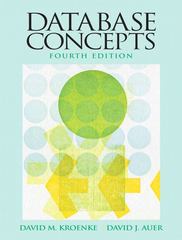Question
Monitors are a useful mechanism for controlling access to critical regions. They are implemented within the threading mechanism of Java, for example. In this assignment,
Monitors are a useful mechanism for controlling access to critical regions. They are implemented within the threading mechanism of Java, for example. In this assignment, we will provide an opportunity to observe the potential for non-determinism in concurrent thread execution -- naturally something that we must avoid.
Consider the following code, written in a Python-like language (blocks are defined by indentation), but with pthreads-like mutexes and condition variables:
monitor rendezvous_5600: 1 mutex m 2 condition C 3 int count = 0 meetup(): 4 m.lock() 5 # return from call to m.lock() 6 count = count + 1 7 if count < 2: 7.1 wait(C, m) else: 7.2 signal(C) 8 count = 0 9 m.unlock()
In the initial state, count is 0. Starting at time 0.0, the following sequence of events occurs:
At time 0.0, thread A invokes meetup()
At time 1.0, threads B and C invoke meetup(). Thread B wins the race and enters the monitor before thread C.
There are four legal orders of execution.
Deliverable: Give all orders of execution in detail. In particular, indicate, in order, each line executed in the following manner:
When lines 6 and 8 execute, indicate the resulting value of count. As a starting point, the first couple lines of each execution order after the initial start are:
0.0 A 4
0.0 A 6 [count 1]
0.0 A 7
Step by Step Solution
There are 3 Steps involved in it
Step: 1

Get Instant Access to Expert-Tailored Solutions
See step-by-step solutions with expert insights and AI powered tools for academic success
Step: 2

Step: 3

Ace Your Homework with AI
Get the answers you need in no time with our AI-driven, step-by-step assistance
Get Started


